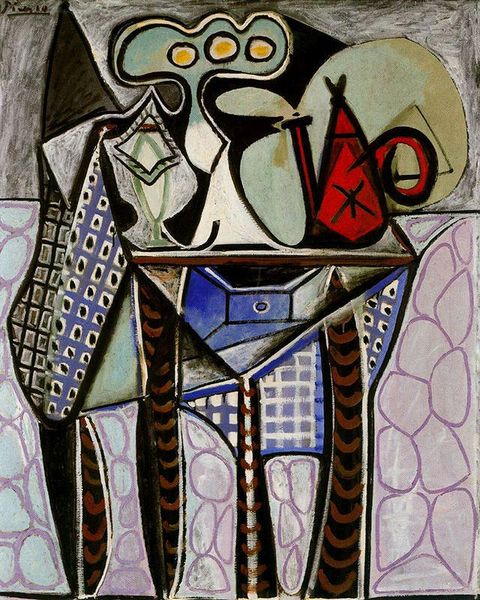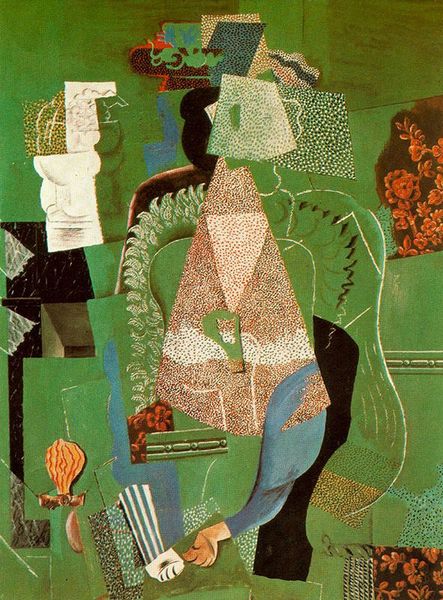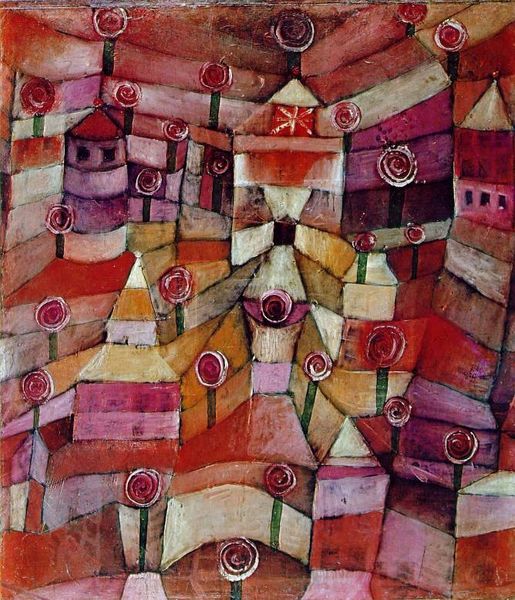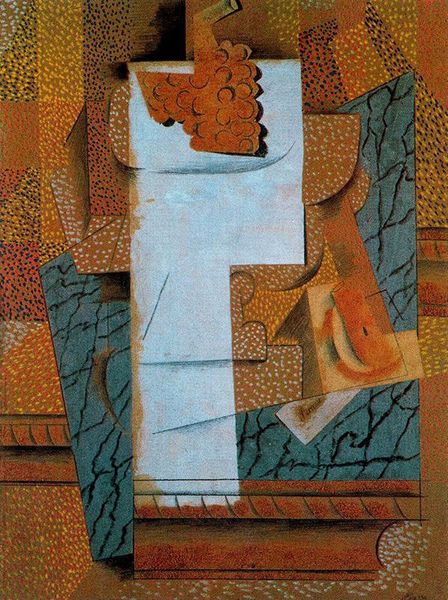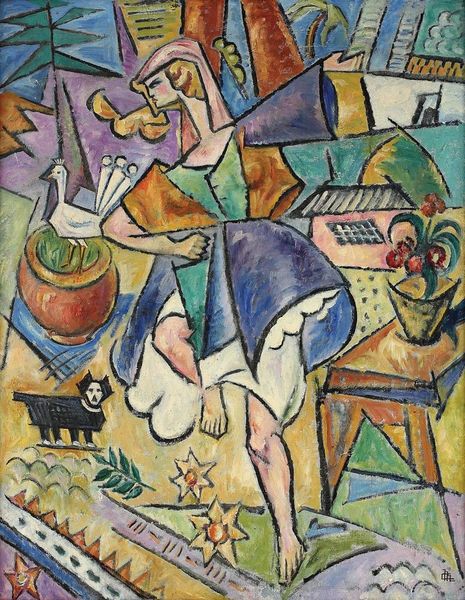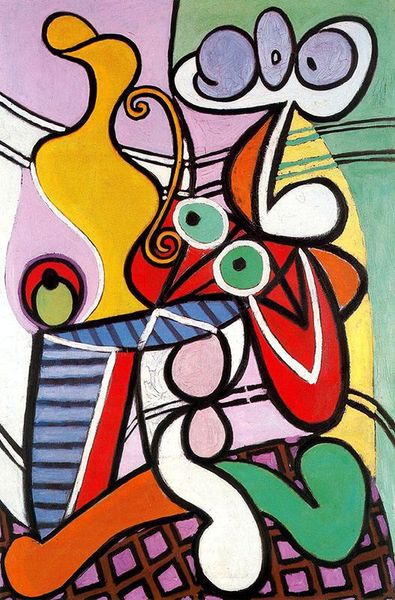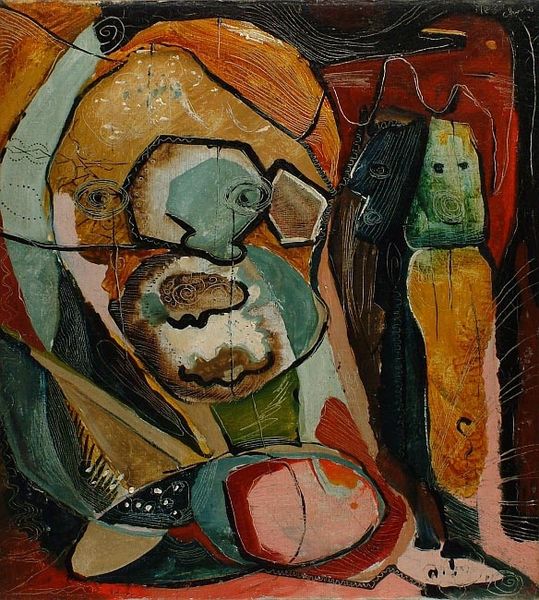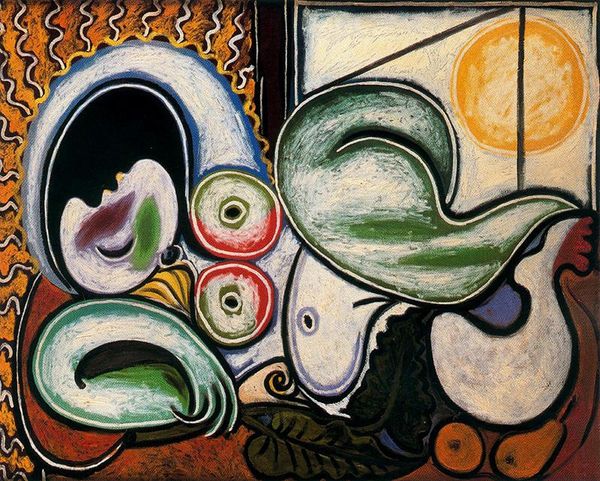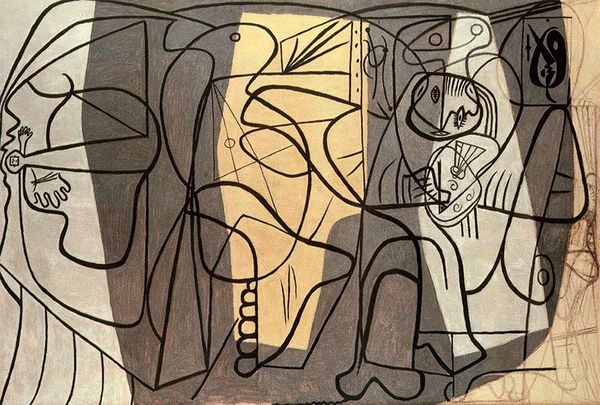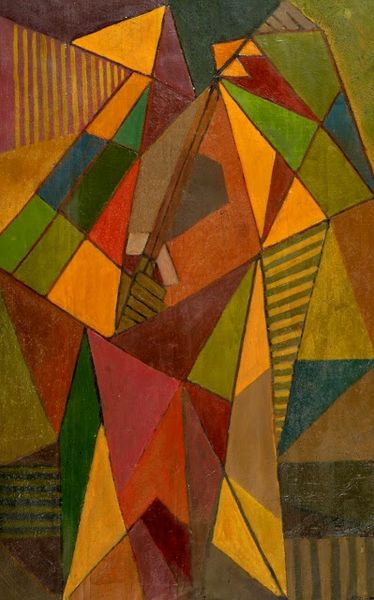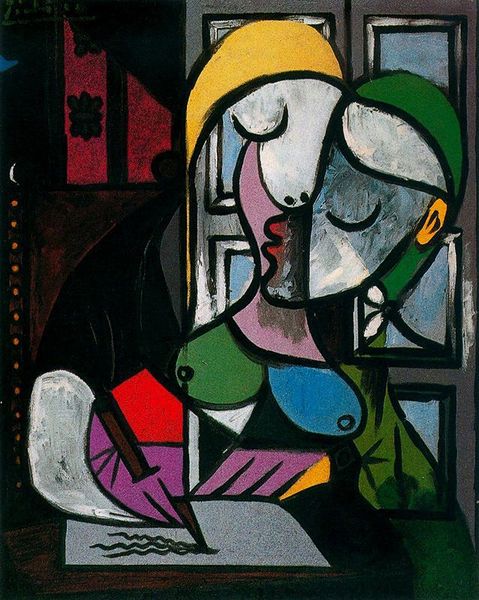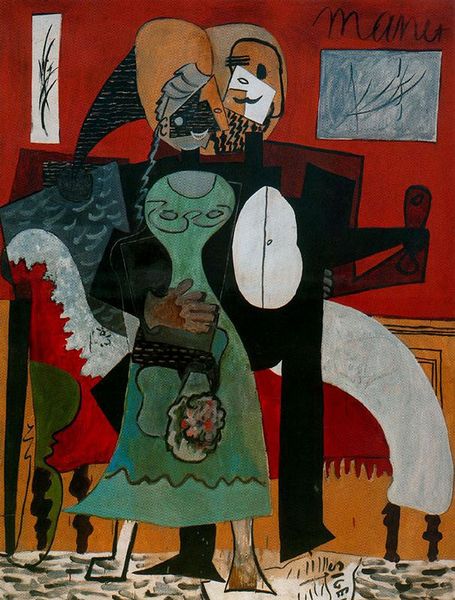
Dimensions: 46 x 38 cm
Copyright: Pablo Picasso,Fair Use
Curator: Taking a look at this striking canvas, we see "Portrait of Woman," painted by Pablo Picasso in 1936, executed with mixed-media and featuring an impasto technique. What's your immediate reaction? Editor: Intriguing! At first glance, it’s like staring into a pointillist dream—a somewhat melancholic one, painted through the lens of Cubist abstraction. The woman appears contemplative, almost sorrowful. There's a disjointed yet compelling beauty to it, isn’t there? Curator: Indeed. Picasso created this portrait during a period when his personal life was quite tumultuous. His relationship with Marie-Thérèse Walter was ending, and he was beginning his affair with Dora Maar. Many read the angularity and distorted features as a reflection of this inner turmoil. What are your thoughts? Editor: That context adds a layer of understanding. It’s as if her face, broken into geometric shards, mirrors the fracturing of relationships. And the impasto! You can almost feel the weight of his emotion, layered thickly onto the canvas. The political climate too… with the rise of fascism, you have to wonder about the collective anxiety leaking in here. It really speaks to Picasso’s public response to that time period, I think. Curator: Interesting point. There is something profoundly unsettling about its visual vocabulary. I keep finding myself thinking about naive art, especially how its uninhibited nature, which is kind of embedded into this picture, seems to enhance rather than detract from the underlying themes of abstraction and emotional realism that underscore it. The painting pushes abstraction and yet feels intensely personal. Editor: Yes, and I love the restricted palette—purples, greens, that vibrant red—it’s like a coded language reflecting Fauvist ideas but internalized. Picasso used to say "Painting is not made to decorate apartments. It is an offensive and defensive weapon against the enemy." Makes you consider who is 'the enemy', in this deeply complex context. Curator: It truly does offer such a deeply personal response. A window into the soul, fractured yet whole. Editor: Indeed— a visual poem that makes the abstract tangibly human.
Comments
No comments
Be the first to comment and join the conversation on the ultimate creative platform.
